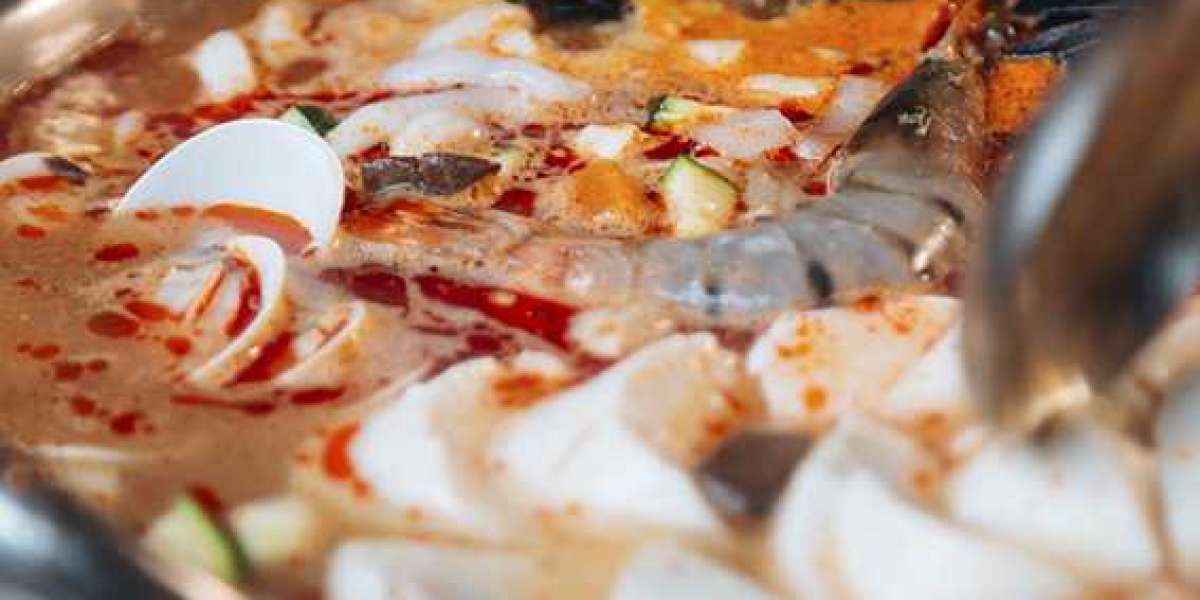Introduction to Korean Army Stew
Korean Army Stew, known locally as Budae Jjigae, is one of the most flavorful and comforting dishes in Korean cuisine. This hearty hotpot is famous for blending traditional Korean ingredients with American-style processed foods like sausages, ham, and cheese. The result? A spicy, savory, and umami-packed stew that warms the body and delights the taste buds.
Originally born from post-war creativity, Korean Army Stew has evolved into a beloved comfort food enjoyed by families, students, and food lovers across the world.
The Origins of Korean Army Stew
The story of Korean Army Stew begins in the 1950s, shortly after the Korean War. Food was scarce, and locals made use of surplus ingredients from U.S. military bases—like canned meats, baked beans, and instant noodles—by combining them with gochujang (Korean chili paste) and kimchi.
Over time, this clever fusion became a symbol of resilience and cultural blending. Today, Budae Jjigae is celebrated not only for its rich history but also for its dynamic flavors and versatility.
What Makes Korean Army Stew So Delicious
The magic of Korean Army Stew lies in its flavor balance. The spicy kick of gochujang, the tang of kimchi, and the savory richness of meats all come together in perfect harmony. Add noodles, tofu, rice cakes, and cheese, and you get a meal that’s both indulgent and deeply satisfying.
The broth is the soul of the dish. It’s simmered slowly to absorb the essence of each ingredient—creating layers of flavor that intensify with every spoonful.
Common Ingredients in Korean Army Stew
While recipes can vary, here are some key components that give this stew its iconic taste:
Kimchi: Adds tanginess and depth.
Gochujang (chili paste): Brings heat and color.
Spam or sausage: Adds umami and richness.
Instant noodles: For extra comfort and texture.
Tofu: Softens the spice and absorbs the broth.
Cheese: Melts beautifully for creamy balance.
Rice cakes (tteok): Chewy texture and subtle sweetness.
Each bite combines spicy, salty, and savory notes that make this stew irresistibly bold.
How to Make Korean Army Stew at Home
Making Korean Army Stew is easy and fun—perfect for home gatherings or a cozy dinner night.
Prepare the broth: Mix gochujang, gochugaru (chili flakes), soy sauce, and garlic in water or anchovy stock.
Layer the ingredients: In a large shallow pot, place kimchi, spam, sausages, tofu, mushrooms, and rice cakes.
Add the broth: Pour your spicy mixture over the ingredients.
Simmer: Let it cook for about 15 minutes until flavors blend.
Add noodles and cheese: Drop in instant noodles near the end and top with cheese for a creamy finish.
Serve hot and enjoy the satisfying blend of spice, warmth, and texture.
Why People Love Korean Army Stew
There’s a reason this dish is so popular—it’s comfort in a pot. The bold, spicy flavors are addicting, and the variety of ingredients keeps every bite exciting. It’s also a social dish, perfect for sharing with family or friends over laughter and conversation.
The stew also offers a nostalgic connection for many Koreans, reminding them of humble beginnings and the joy of communal eating. For international diners, it’s an introduction to the unique charm of Korean comfort food.
Variations of Korean Army Stew
Over the years, people have customized Budae Jjigae to fit their tastes. Here are some popular versions:
Seafood Army Stew: Adds shrimp, squid, or mussels for extra depth.
Vegetarian Army Stew: Uses tofu, mushrooms, and plant-based protein instead of meat.
Cheesy Army Stew: A generous layer of melted cheese for rich, creamy flavor.
Spicy Deluxe Stew: Extra gochugaru and chili for spice lovers.
No matter which version you choose, each offers a deliciously unique experience.
Tips to Enhance Your Korean Army Stew
To take your stew to the next level, try these expert tips:
Use fermented kimchi for deeper flavor.
Balance the heat by adding a spoon of sugar or a slice of cheese.
Add instant noodles just before serving to keep them springy.
Serve with steamed rice or side dishes like pickled radish and kimchi pancakes.
These small tweaks can make your meal even more memorable.
Pairing Korean Army Stew with Drinks
Korean Army Stew pairs perfectly with soju or makgeolli (rice wine), balancing the rich and spicy flavors. For a non-alcoholic option, cold barley tea or soda water works wonderfully to refresh your palate between bites.
Korean Army Stew – A Global Favorite
What started as a creative survival dish has now become an international comfort food. From Seoul to Singapore, New York to London, restaurants serve their own takes on Budae Jjigae. Its bold, satisfying flavors appeal to anyone who enjoys hearty, spicy meals with a touch of fusion flair available at EIGHT Korean BBQ.
Conclusion
Korean Army Stew is more than just a dish—it’s a story of history, culture, and culinary innovation. Its blend of traditional and modern ingredients reflects the heart of Korean cuisine: resourceful, flavorful, and deeply communal.
Whether you’re trying it at a restaurant or making it at home, each bowl promises warmth, spice, and a truly unforgettable dining experience.







